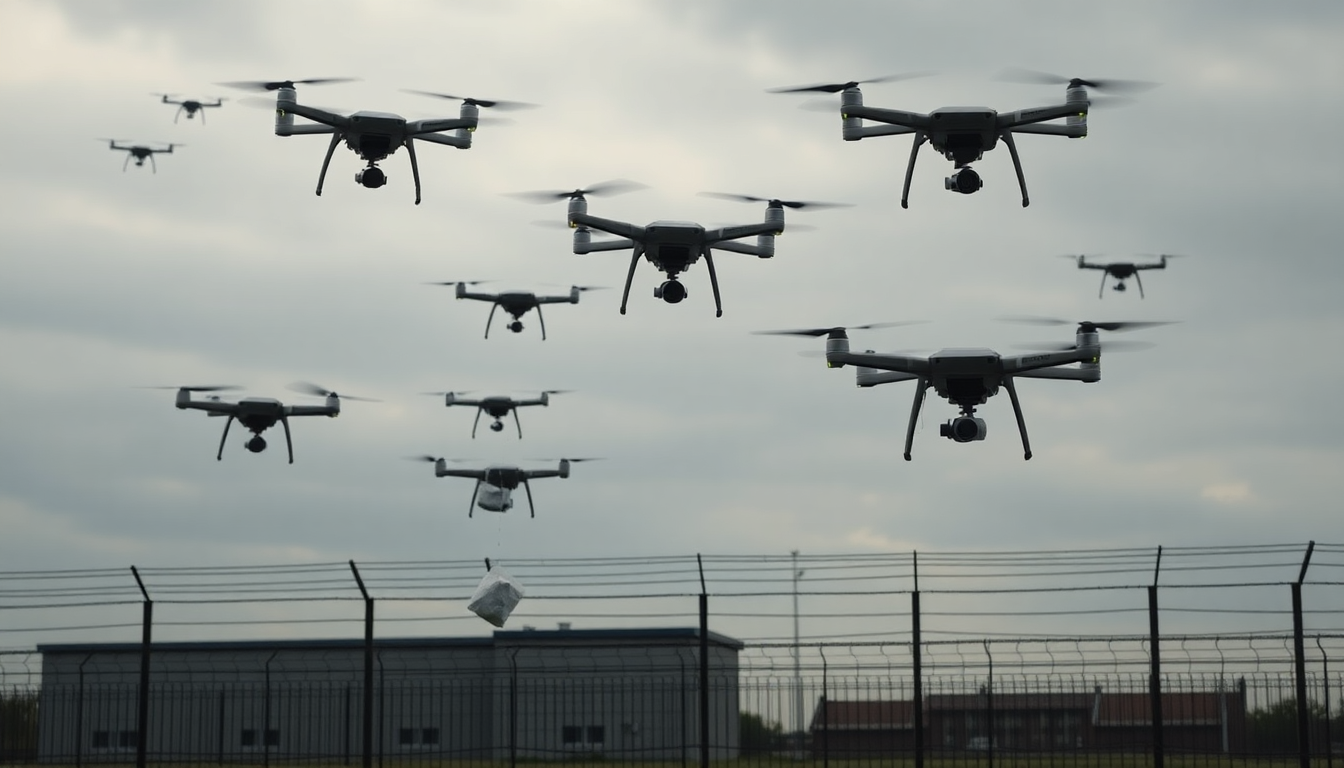Table of Contents
Imagine waking up every day to the unsettling buzz of drones hovering above, like pesky mosquitoes, but instead of a little blood, they’re dropping off a plethora of contraband to inmates. Welcome to the new normal in Quebec’s detention centres, where the skies are not just for birds but for some seriously questionable aerial delivery services.
Statistics from the provincial government reveal that between January and March, there were 274 reported drone sightings. That’s over three drone incidents a day, and that’s just in provincial centres. Talk about a security nightmare!
The growing challenge of drone contraband
According to Stéphane Blackburn, the big cheese at Quebec’s correctional services, the threat posed by these flying contraband carriers is a daily battle they’re losing. With 195 of the 247 drones documented actually dropping packages, it’s no wonder staff are feeling overwhelmed.
Sure, they’ve managed to seize 69% of these aerial deliveries, but one can’t help but wonder if that’s just a drop in the bucket. After all, they’ve also confiscated a staggering 896 cellphones. What’s next, a drone delivering pizza to inmates?
But let’s not sugarcoat this—drone sightings are on the rise, and it seems the problem is spreading.
From April 2021 to March 2022, there were 695 drone sightings. Fast forward to the same period in 2024-2025, and brace yourself for a whopping 1,175 sightings. And here’s the kicker: it’s not just Montreal that’s getting bombarded.
The drone drama is spreading to other regions. So much for keeping it contained, right?
Contraband: the usual suspects
Blackburn points out that the most common contraband being delivered includes tobacco and cannabis, but let’s be real—who’s surprised? Cellphones, tools, and various drugs are also making their way into the hands of inmates, fueling a chaotic ecosystem of debts and violence.
Frédérick Lebeau, the head honcho of the Union of Canadian Correctional Officers, has described the situation as “exponential.” Talk about a fancy way of saying it’s spiraling out of control!
Inmates are snatching these packages like kids on Halloween, hiding them in body cavities or clever spots. Sometimes, drones are even flown directly to windows where inmates have managed to, ahem, “modify” their surroundings. It’s a recipe for disaster, creating a perfect storm of debts and violence that’s wreaking havoc inside these institutions.
Government measures: a mere band-aid?
Recently, the province has announced a hefty $38.5 million in measures to combat this contraband crisis. They’re throwing money at technological solutions like drone detectors and mobile X-ray scanners, but is it really enough? Sure, they’ve got plans for fencing and netting around windows and courtyards, but you’ve got to wonder—are these measures just a slap on the wrist for a much larger issue?
The federal government has jumped on the bandwagon too, rolling out a pilot project that allows correctional staff to use radio-frequency jammers to disrupt communication between drones and their operators. Sounds fancy, but will it be effective? Lebeau notes that while these announcements are a step forward, they’re only being implemented in a handful of institutions. So, what’s the point of having fancy tech if it’s not widespread?
The tech arms race
Jeremy Laliberte, a professor of mechanical and aerospace engineering, believes that drones are the perfect tool for delivering contraband. They’re cheap, easy to modify, and can be launched from miles away. The war in Ukraine has sparked interest in counter-drone technology, but let’s face it—these systems are expensive and complicated. Meanwhile, the drones themselves can be bought for a couple of hundred bucks. It’s like bringing a knife to a gunfight, isn’t it?
While physical barriers and detection technology can provide some level of protection, determined operators will always find a way around them. Laliberte advocates for a layered approach, likening it to Swiss cheese—lots of holes, but together, it can create a formidable defense. But one has to ponder, will this ever be enough? The technology keeps evolving, and so do the methods of those who seek to exploit it.
What’s next?
As we look ahead, it’s clear that the battle against drones delivering contraband in Quebec’s detention centres is far from over. With the rise in sightings and the increasing sophistication of these operations, one has to wonder if the government will ever get a handle on this situation. Or are we destined to watch as the skies above these facilities continue to be a playground for the reckless and the bold? Only time will tell, but for now, it seems the drones have the upper hand—and they’re not going away anytime soon.





